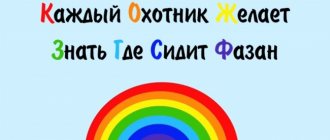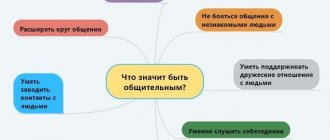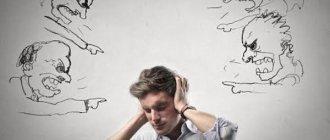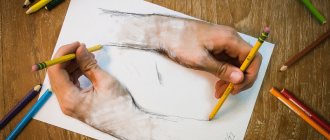Bibliotherapy is a psychotherapeutic method that uses literature as a form of correction of the patient’s mental state. This is treatment with the help of a book. The patient associates himself with the hero of the work and the situations in which he finds himself. All the hero’s feelings and experiences become the patient’s personal experiences. Thus, unresolved conflicts and problems are revealed, the patient gains awareness of their causes, and finds solutions.
Definition of the concept
The term “bibliotherapy” today means a science that studies the characteristics of an individual’s formation of stress resistance, the development of willpower, and the improvement of intellectual indicators.
In psychology, bibliotherapy is a method of correctional work in which the client is asked to identify himself with the hero of a literary work and analyze the character’s behavior in certain situations. The therapeutic effect is based on the client’s identification of the literary hero’s problems with his own difficulties.
Bibliotherapy has the basic characteristics of science: it has its own goals and objectives, terminology, and methods. At the moment, this technology of work is considered by scientists as an independent pedagogical movement, one of the variations of library science.
History of the method
Bibliotherapy as a method of psychological correction is based on human psychophysiology. Its homeland is Ancient Egypt. In Greece, in the ancient library, Pythagoras actively used bibliotherapy as the main method of working with his students.
Later in Europe, church scriptures found use in the work of healers. The list of literature used for medicinal purposes expanded with the advent of the Renaissance: works of art began to be used as a means of therapy.
However, only at the beginning of the 20th century did psychologists and psychophysiologists prove that an activity such as bibliotherapy is not just working with text, but an independent method of psychotherapy. The founder of the method in Russia is considered to be N. Rubakin, who in his scientific work “Among Books” wrote that with the help of correctly selected literary texts, the psycho-emotional state of people can be changed.
Bibliotherapy exercises were first tested in Kharkov in the department of psychoneurology by I.E. Velvovsky. The scientist relied on the recommendations of psychotherapist V.Ya. Wise, trying to create the most comfortable conditions for the participants during bibliotherapy sessions.
In 1916, the initial goals and objectives of bibliotherapy as a method of psychotherapy were defined. The innovative technique of working with the book aroused great interest not only among psychotherapists, but also among psychologists, teachers, and doctors. Bibliotherapy was used as an additional method during treatment in sanatoriums and boarding houses for the elderly.
In the post-war period, treatment with literary texts was organized in rehabilitation centers. A major contribution to the development of the method was made by Yu.N. Drescher, B.S. Kreidenko, R. Skaller, O.L. Kabachek, B.A. Simonov, I.N. Kazarinova.
Features of social adaptation of people with memory impairments
Cultural and leisure activities play an important role in the socialization of people with age-related memory impairment. It provides an opportunity to return to society and, through various types of active leisure, to activate the mind and train memory. It can be:
— classes in artistic, applied, technical creativity;
— leisure holidays, competitions;
— excursions, games;
- business, commercial, logical, intellectual games and activities;
- quiet passive rest - reading, watching TV, listening to the radio, solving crosswords.
It is important to be able to choose and offer a person an activity that will not allow him to focus on painful sensations and experiences. Often this is applied artistic and technical creativity or a passive activity - reading, watching TV, listening to the radio. Thanks to this, older people feel better and their painful condition is alleviated.
Rehabilitation and social adaptation of older people with memory impairment depend on the participation of specialists. These are doctors, psychologists, teachers, defectologists, social educators, specialists in culture and rehabilitation of the disabled. For some reason, people who feel their memory is beginning to fail them rarely turn to doctors about this.
Let's take a closer look at different types of rehabilitation leisure activities.
Kinds
Common types of bibliotherapy are:
- Purposeful psychocorrectional work with a book. This type involves the direct participation of a psychologist in the therapeutic process, who diagnoses the client’s problem, recommends certain texts, and explains techniques for working with them.
- Reading fiction without setting psychocorrectional tasks. This type is practiced by people who love to read. They select fiction according to their preferences. Reading books improves their mood and has a positive effect on cognitive processes.
Expected Results
An important indicator for assessing the effectiveness of bibliotherapy is the patient’s interest in reading. If it decreases, one can judge the deterioration of health.
There are different typologies of effects and functions of the therapeutic method:
- Information functions . Reading provides information and increases knowledge while reducing fear of the unknown. This function is inherent in scientific literature.
- Educational function . Reading brings perspectives and opinions that enhance education.
- "Mirror" function . The reader compares the author's views with his own views, changing his own opinion based on this comparison.
- Identification functions . The reader finds an example or identifies with a character.
- Cleansing function . When reading a book, psychological cleansing (catharsis) can occur. To achieve this effect, the work must be able to perform this purification and the reader must be willing to experience catharsis while reading.
- Aesthetic function . The book affects the reader aesthetically.
- Relaxation function . Providing relaxation and relaxation.
Methods
The main methods of bibliotherapy are:
- Corrective method. It does not involve solving problems of mental correction. Its main goal is a positive transformation of the client’s difficult life situation by expanding the range of individual behavioral stereotypes. To achieve the corrective goal, entertaining texts are used. The method is suitable for correcting personal anxiety and increasing an individual’s self-esteem.
- Psychocorrection method. This method is aimed at transforming the painful mental state of the individual. The psychologist helps the client learn to control emotions and manage their mood. The result of the application of the psychocorrectional method is the formation in the client of the ability to openly express feelings and correctly understand the emotions of other people.
Isotherapy
Art therapy or isotherapy
is a rehabilitation technology based on the use of art and used by psychologists, speech pathologists, animators and teachers for the rehabilitation and socialization of people.
Artistic creativity therapy helps eliminate or reduce neuropsychic disorders, restore and develop impaired functions and skills, and develop abilities for gaming, educational, and work activities in the process of creative activities.
A person expresses his inner state, sensations and experiences through drawing. Being directly related to the most important mental functions - visual perception, motor coordination, speech, thinking - drawing develops each function and connects them with each other, helping a person organize the acquired knowledge, formalize and record his ideas about the world around him.
Drawing solves psychological and personal problems - fears, anxieties, uncertainty, loneliness, overcomes negative experiences, builds hand confidence and precision of movements. For example, by the tonal and color scheme, rhythm and composition of the drawing, by the choice of characters and plot, psychologists judge the presence of problems in a person’s psyche and worldview.
Isotherapy classes harmoniously develop a person’s mental functions. Classes are varied in subject matter, form, methods of influence, and materials used. To master the material and develop skills in the process of sociocultural rehabilitation, complex techniques are used: drawing in combination with speech, music, and light.
The more creativity and creativity a person has, the longer his mind will not lose its freshness.
Techniques and exercises
I will reveal the directions of bibliotherapy. Common bibliotherapy techniques are:
- Reading literary texts aloud. This technique is implemented in a group. The facilitator reads a passage from the text and then organizes a group discussion of this passage. If a play is chosen to achieve the goals of psychocorrection, then its reading is organized by roles. Each of the participants in the group independently draws parallels between the artistic word and their own problems.
- Identifying oneself with the hero of a work of art. Psychologists use this technique as homework. The client is asked to choose a literary character that he resembles. At the next meeting, the psychologist and the client discuss the choice of a literary character and analyze his actions described in the book. This technique improves an individual’s social perception and creates new behavior patterns in him.
- Retelling a book or story you have read. This technique is also used in group work. The presenter reads out a particular work of art and asks the participants to retell it from the perspective of different characters in the story. This technique helps a person learn to analyze a situation from different positions.
- Independent reading of the work by the client at home, and then discussion of what was read with a psychologist. This technique is used in individual work with a client. At each meeting, the psychologist recommends that the client read one or another text. The client writes down his thoughts and emotions that arise during the reading process in a reading diary. These notes will be the starting points for discussing the piece at the next meeting.
- Own composition of literary texts. This technique is aimed at the client searching for different options for responding to certain life events. The beginning of the story is voiced by the presenter, and then the participants offer various options for the development of events.
- Preparation of illustrations for literary text. The psychologist uses this technique when there is a need for in-depth diagnosis of the patient’s problem.
- Acting out a situation from the book. This technique helps participants try on the role of a particular literary character. Such actions teach clients to pay attention to a person’s posture, facial expressions, and gestures, and to predict the emotional reactions of a communication partner.
The psychologist chooses exercises within each of the listed techniques, types and methods of work depending on the goals of psychocorrection and the age of the client.
Reading prolongs life
The habit of reading deserves close attention. This activity helps:
- maintain mental clarity;
- stimulate thinking;
- develop imagination.
A useful hobby will tone up your brain function, help prevent the development of senile dementia and give you extra years of life. According to a study by scientists that lasted 12 years, lovers of reading extend their lives by an average of 2 years.
You need to devote time to this activity regularly (3.5 hours a week or more).
It’s even better if the books you read are discussed among acquaintances and friends. Sharing impressions and talking about funny moments is important for stimulating brain activity.
Bibliotherapy has been proven to apply to everyone. Professional affiliation, income level, psychological balance do not matter. Books help prolong life, as well as:
- reduce susceptibility to stress;
- distract from worries;
- improve mood;
- improve the culture of communication;
- develop creative abilities.
Reading increases the number of neural connections within the brain. A healthy habit is the best way to combat depression and prevent Alzheimer’s disease, which is steadily gaining momentum.
Stages and algorithm
The algorithm for conducting bibliotherapy includes several stages:
- The stage of motivating participants to the lesson. At this stage, the facilitator establishes contact with the participants, sets the goals and objectives of the session, and introduces the participants to the rules of group work.
- Stage of cognition in bibliotherapy. At this stage, direct work with the literary text takes place.
- Discussion stage. At this stage, the presenter organizes a discussion of the work of art.
- Reflection stage. The final part of the session is needed to sum up the results, receive feedback from the participants, and evaluate the effectiveness of psychocorrection.
Play therapy
Game therapy
is a complex of rehabilitation game techniques and a means for liberating pathological mental states of a person.
This technology performs the functions of socialization, development, education, adaptation, relaxation and recreation. At the same time, traumatic life circumstances are experienced in a conditional, weakened form.
Types of directed play therapy include:
— educational and educational games;
— board and computer games;
— contests, tournaments, competitions;
- outdoor games.
Any game can be adapted for the elderly by facilitating the playing conditions, reducing the number of participants or the duration of the game.
In games, a person can freely express himself, free himself from the stress and frustration of everyday life, try himself in a specific social role, establish communication and master social skills.
Principles of literature selection
The psychologist needs to pay great attention to the selection of literary works for conducting bibliotherapy sessions, since this method forces the client to “appropriate” the feelings, thoughts and actions of the lyrical hero. Therefore, the hero must be positive and have a high level of morality. The selection of literature for psychocorrection is determined by the following principles:
- Taking into account the age and individual characteristics of the client. The use of bibliotherapy allows working with different age groups: with preschoolers, teenagers, students, adults and the elderly. Books must correspond to the psychological characteristics of age.
- Accessibility and understandability of the writer’s literary language. If the literary text is incomprehensible to the reader, interest in it will quickly disappear. It is impossible to achieve psychocorrectional goals using bibliotherapy if the client has no interest in the session.
- Correlating the genre specifics of the book with the client’s psychological problem. Different literary genres have different effects on people.
- The contrast of good and evil in a work of art. This principle is important when selecting literature for children's bibliotherapy sessions.
What do we have?
1. The appearance of senile memory impairment in a person is not the end of life.
2. The correct reaction to the processes occurring in the body is important. This is not fencing and isolation, but participation in diverse cultural and leisure activities to improve one’s condition.
3. There are many types of activities. Choose the one that suits you best. The main thing to understand is that the more mental and physical activity, the better for our brain.
4. And remember - “The path can be mastered by those who walk.”
Specifics of using bibliotherapy at different age stages
At different age stages, the specifics of using bibliotherapy will differ.
Working with children
Preschool teachers use bibliotherapy to solve the problems of developing morality in children. This problem is solved through fairy tales. Bibliotherapy in working with preschoolers allows you to solve problems such as:
- nurturing the child’s emotional responsiveness;
- formation of a socially approved type of behavior;
- creating conditions for the child’s creative self-expression;
- speech development;
- development of mental processes.
For school-age children, bibliotherapy is a method that helps cope with intrapersonal contradictions. Working with a literary text, a teenager finds answers to questions and understands the cause-and-effect relationships of events in his life.
Working with older people
If bibliotherapy is used for the rehabilitation of older people, then preference should be given to philosophical collections, parables, and poetry. Such texts help a person accept himself as he is, because they are built on universal human values. During bibliotherapy sessions, pensioners rethink their life path.
Problems of older people with memory impairment
Old age itself is a big stress factor. Additional stress is the person’s awareness that the mind, which has served faithfully all his life, begins to change. It could be:
- impaired memory for events that occurred recently, taking into account the preservation of reproduction of ancient events;
- attention disorders - lack of concentration, distractibility;
- slowing down the pace of thought processes;
- emotional disturbances;
- decreased ability to chronology events and navigate in space;
- loss of ability to think logically;
— from the point of view of motor skills, this is a violation of tempo, smoothness, and coordination.
Observing such changes leads to withdrawal, depression and denial. This reaction only worsens over time and leads a person to social loneliness. Without outside help it is difficult to return to a normal existence.
Focusing on negative changes in the body fixates on yourself and your problems. Therefore, we should not forget that there are advantages to old age. Positive social characteristics of the older generation include:
- life wisdom - the ability to apply life experience, give reasonable advice in problem situations;
— willingness to share knowledge and skills;
- the desire to replace lost professional and family roles with social activity.
It is important to see not only problems, but focus on the positive aspects of life. To solve problems, it is better to turn to professionals.
Direction use
| Organizers |
Control
Control over specific mental manifestations can be exercised by strengthening or weakening them. Strengthening is achieved through repetition and detailed reproduction of each process. Weakening is achieved through analysis or repression by other memories and emotions. This approach can influence the state of the individual during experiences of varying intensity.
The control process itself consists of several stages:
Awareness of the situation Understanding of the mechanism of influence of auto- and heteropsychogenic factors on it Awareness of the role of one’s personality in the formation of this state Awareness of one’s attitude to problems of paramount importance
Reading books whose heroes are outstanding personalities, the client involuntarily identifies their emotional experiences with his own. This helps him to better understand his personal characteristics, to become more aware of his own mistakes, and to look at his life from the perspective of another person. The book provides the client with a unique opportunity, being alone with himself, to thoroughly analyze his emotional state.











